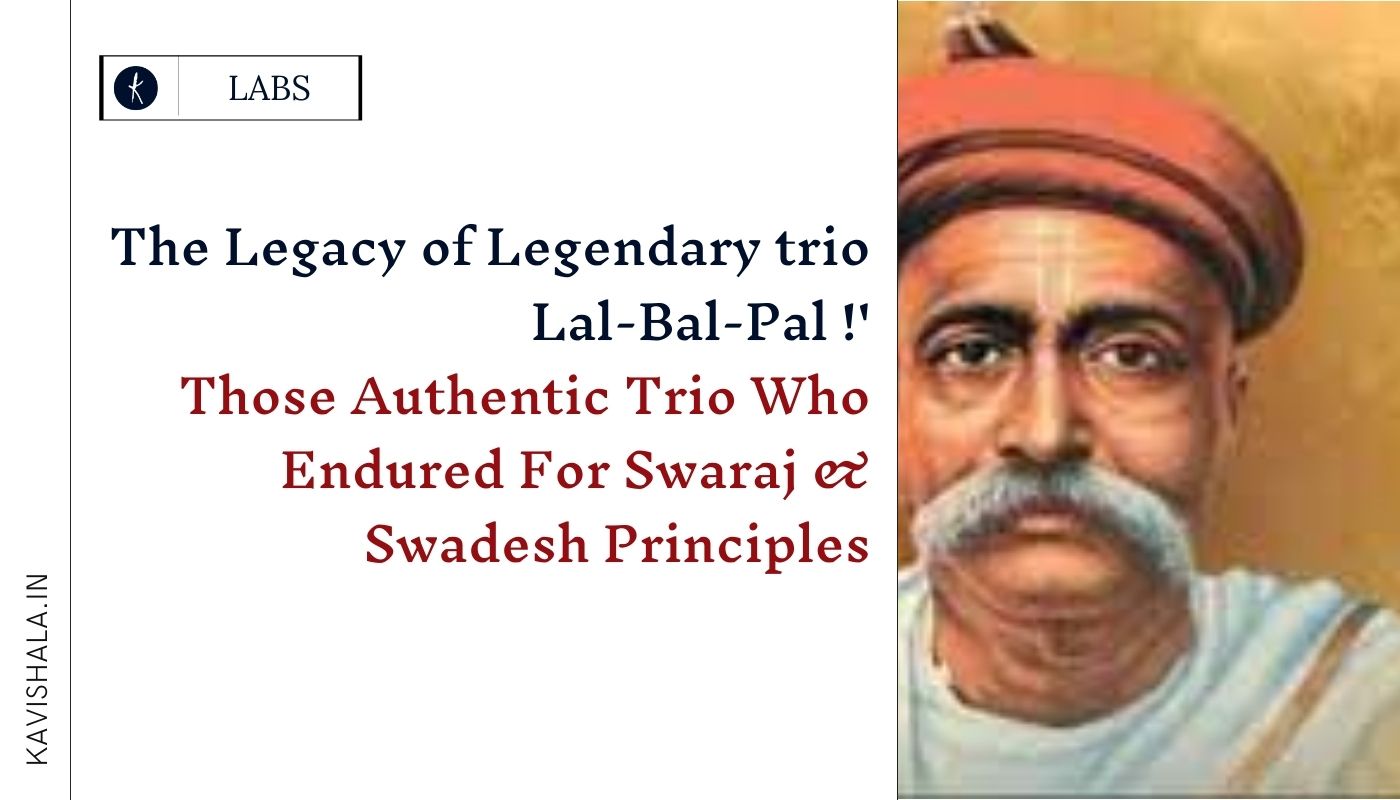
"The most powerful factors in the world are clear ideas in the minds of energetic pupils of goodwill."
Those Authentic Trio Who Endured For Swaraj & Swadesh Principles: The three energetic and dynamic leaders Lokmanya Tilak, Lala Lajpat Rai, and Bipin Chandra Pal, who had been promoting self-reliance and opposing the monopoly of the British goods in India, famously came together as the Lal-Bal-Pal trio.
How and why did these three brave freedom fighters from varied backgrounds and far away states come together? What united them in their revolt for self-reliance?
Well, Kavishala reveals the hidden mystery behind their golden journey that is still remembered as a great source of Inspiration and patriotism!
The ominous Britishers were responsible for the sense of deep unrest among the poor Indians. At that time millions of Indians were protesting against British rule in a way that they felt would best lead the country towards freedom. But, the crowd believed in a peaceful approach, others had a more direct, and radical attitude towards the revolution. The triumvirate of Lal-Bal-Pal was a part of the rebellious group.
During the nationalist movement, it gradually faded with the arrest of its main leader Bal Gangadhar Tilak and the retirement of Bipin Chandra Pal and Aurobindo Ghosh from politics. Wherein Lala Lajpat Rai Ji suffered from injuries, because of police superintendent James and he died on 17 Nov 1928 due to a severe cardiac arrest.
Lala Lajpat Rai, belonged from undivided Punjab, Bal Gangadhar Tilak, from Maharashtra, and Bipin Chandra Pal was from united Bengal, had come together to raise the voice against the Swadeshi movement—rejecting the purchase of British goods and becoming self-reliant as a country.
We present you a brief history of the three Great Protagonists, who had been revolting with the British Administration in a prolific manner.
1. Lala Lajpat Rai

Being born in undivided Punjab on 28 Jan 1865, Lala Lajpat Rai grew up in a family that allowed the freedom of faith. His father, Munshi Azad was a day scholar of Persian, Urdu, and teacher at a Govt. school where Rai studied.
Since childhood, his efforts towards a self-sufficient India believed in the ideals. In 1895, he started the Punjab National Bank—the first Indian bank to begin with Indian capital solely , which continues to function according to date.
Rai Ji traveled to America in 1907 and immediately found the prevailing ‘color caste' practiced there as caste system prevalent in India.
Having published a travelogue famously called ‘The United States Of America: A Hindu’s Impression and a Study’ and kept those observations therein. In 1917, he founded the Indian Home Rule League of America there.
When he was traveling in the USA, Congress encouraged Indians to stand strong against British Rule. In 1920 while he returned to India, Rai presided over a session of the Congress in Calcutta. It was the same year when the non-cooperation movement was launched, and Rai was an active participant. This revolution mainly boycotted the Rowlatt Act the one that allowed British officials to arrest an Indian that they perceived as a threat without any actual evidence. His proactive ideals, with brave participation in the protest, earned him the title of Lion of Punjab or Punjab Kesari. In a coincidence, Bal Gangadhar Tilak had founded a newspaper by the
